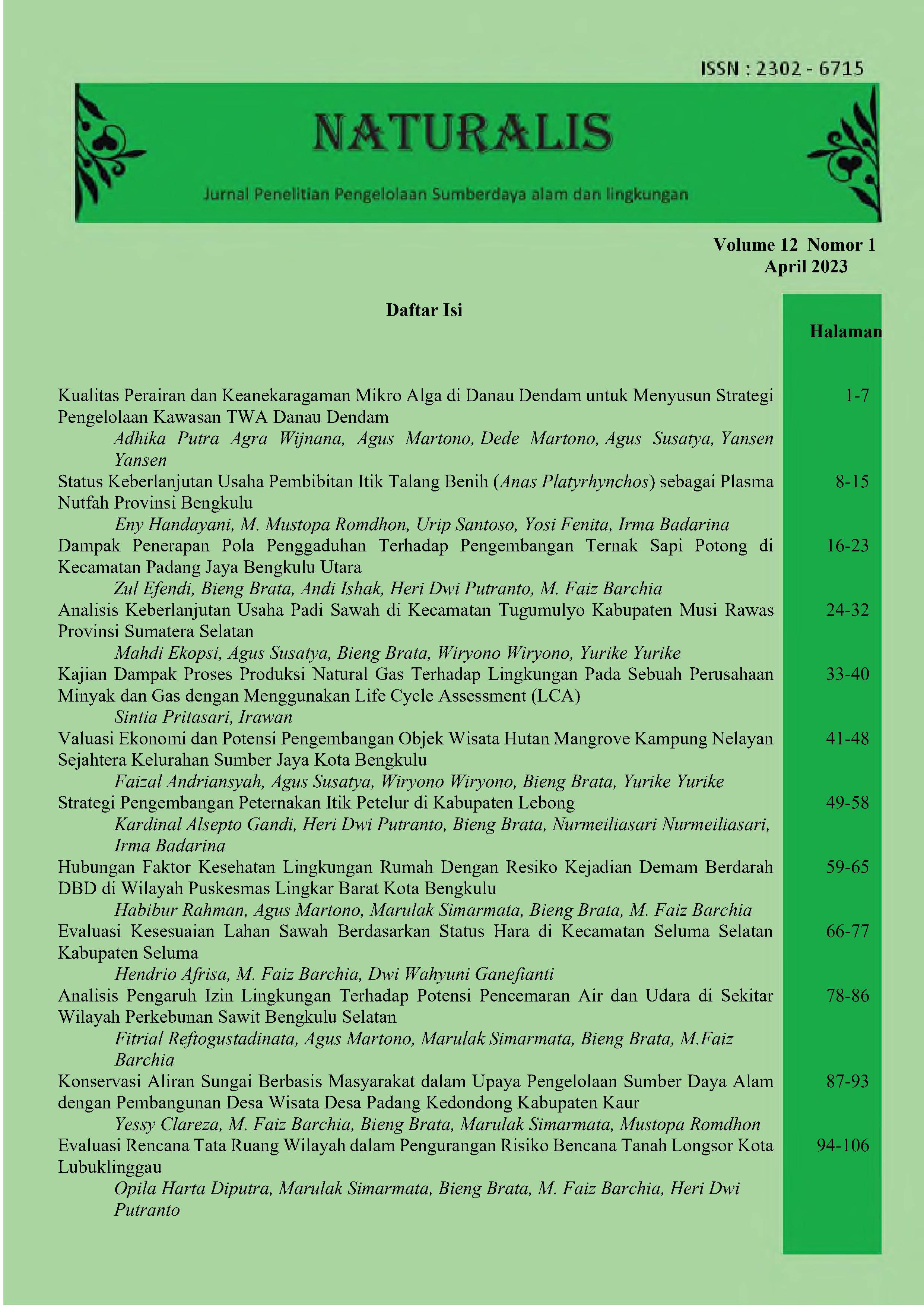Kualitas Perairan dan Keanekaragaman Mikro Alga di Danau Dendam untuk Menyusun Strategi Pengelolaan Kawasan TWA Danau Dendam
Abstract
Lake Dendam is never a loticwaters with lots of human activities around the area. The high human activity around the waters has an impact on the quality of the waters and the organisms in the vicinity. This observation was carried out to obtain an up-to-date picture of water quality and micro-algae biodiversity in Revenge Lake for developing sustainable management strategies. Tests were carried out on the chemical and physical quality of the waters, and the biodiversity of microalgae which were then processed into an area management strategy. The results of the water quality test showed slightly polluted conditions with values of dissolved oxygen (DO), chemical oxygen demand (COD), total suspended solid (TSS), and phosphate which were still outside the water quality standards. However, conditions that can still be tolerated are peat waters. The microalgae biodiversity test showed the dominance and diversity of microalgae genera in the waters. The dominant genus is Nitzchia sp. From these results obtained six sustainable management strategies for Revenge Lake.
Keywords : Biodiversity, Dendam Lake, microalgae, water quality
Full text article
Authors
Copyright (c) 2023 Adhika Putra Agra Wijnana, Agus Martono, Dede Martono, Agus Susatya, Yansen Yansen

This work is licensed under a Creative Commons Attribution-ShareAlike 4.0 International License.
An author who publishes in Naturalis agrees to the following terms:
Author retains the copyright and grants the journal the right of first publication of the work simultaneously licensed under the Creative Commons Attribution-ShareAlike 4.0 License that allows others to share the work with an acknowledgement of the work's authorship and initial publication in this journal
The author is able to enter into separate, additional contractual arrangements for the non-exclusive distribution of the journal's published version of the work (e.g., post it to an institutional repository or publish it in a book) with the acknowledgement of its initial publication in this journal. The author is permitted and encouraged to post his/her work online (e.g., in institutional repositories or on their website) prior to and during the submission process, as it can lead to productive exchanges, as well as earlier and greater citation of the published work (See The Effect of Open Access).
Submission of a manuscript implies that the submitted work has not been published before (except as part of a thesis or report, or abstract); that it is not under consideration for publication elsewhere; that its publication has been approved by all co-authors. If and when the manuscript is accepted for publication, the author(s) still hold the copyright and retain publishing rights without restrictions. Authors or others are allowed to multiply an article as long as not for commercial purposes. For the new invention, authors are suggested to manage its patent before published. The license type is CC-BY-SA 4.0.
Naturalis is licensed under a Creative Commons Attribution-ShareAlike 4.0 International License.

